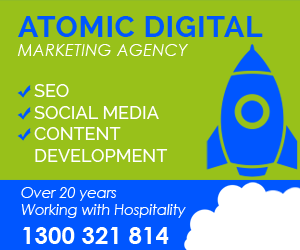Team Building Activities: The Sweet Spot for Corporate Culture
In the modern corporate landscape, the emphasis on building a cohesive and collaborative workplace culture has never been more pronounced. The tools and strategies companies employ to foster this environment vary widely, but one approach has consistently proven effective: team building activities. Despite their effectiveness, experiencing team building activities may be confronting for some employees. However, their impact on corporate culture can be transformative, often turning a group of individuals into a well-oiled team.
The Confrontation of Team Building
Experiencing team building activities may be confronting for employees, especially those who are introverted or prefer to maintain a clear boundary between their personal and professional lives. Activities that require vulnerability, open communication, and reliance on others can push individuals out of their comfort zones. This confrontation, however, is precisely what makes team building so effective. When employees are nudged out of their routines, they often discover new strengths, develop deeper connections with their colleagues, and learn to trust one another more fully.
The discomfort felt during these activities is a catalyst for growth. Overcoming challenges together fosters a sense of camaraderie and solidarity. As employees navigate these experiences, they begin to view their colleagues not just as coworkers but as allies. This shift in perception is crucial for creating a supportive and collaborative corporate culture.
The Benefits of Team Building Activities
The benefits of team building activities extend beyond the immediate experience. They lay the groundwork for improved communication, better problem-solving skills, and increased morale. Here are some of the key advantages:
1. Enhanced Communication: Team building activities often require clear and effective communication. Whether it’s a trust fall exercise, a problem-solving task, or a fun outdoor adventure, these activities help employees practice and refine their communication skills. This enhanced communication translates into the workplace, leading to more effective collaboration and fewer misunderstandings.
2. Improved Problem-Solving Skills: Many team building activities are designed to present a challenge that the team must solve together. These scenarios encourage creative thinking and collaboration, skills that are invaluable in the workplace. Employees learn to leverage each other’s strengths and work together towards a common goal.
3. Increased Morale and Engagement: Taking a break from the daily grind to participate in a fun and engaging activity can do wonders for employee morale. It provides an opportunity for employees to relax, have fun, and build relationships in a less formal setting. This boost in morale can lead to increased engagement and productivity back in the office.
4. Stronger Relationships: Team building activities provide a platform for employees to get to know each other on a more personal level. These stronger interpersonal relationships can lead to a more cohesive and supportive work environment. When employees feel connected to their colleagues, they are more likely to be motivated and committed to their work.
Corporate Events and Social Media
In today’s digital age, corporate events splash all over social media, showcasing a company’s commitment to fostering a positive workplace culture. These events, often meticulously planned and executed, are not just about fun and games; they are strategic tools for branding and employee engagement.
When employees share their experiences from team building activities on platforms like LinkedIn, Instagram, and Twitter, it creates a ripple effect. Potential hires see a vibrant and dynamic work environment, which can be a significant draw. Current employees feel a sense of pride and belonging, knowing that their company values and invests in their well-being.
Crafting the Perfect Team Building Event
The key to successful team building is to design activities that are inclusive, engaging, and aligned with the company’s culture and values. Here are some tips for crafting the perfect team building event:
1. Know Your Team: Understand the interests, strengths, and dynamics of your team. Choose activities that will be enjoyable and beneficial for everyone involved.
2. Set Clear Objectives: Define what you hope to achieve with the team building activity. Whether it’s improving communication, fostering creativity, or simply having fun, having clear objectives will help you select the right activities.
3. Encourage Participation: Create an environment where everyone feels comfortable participating. Ensure that the activities are accessible and inclusive, so no one feels left out.
4. Reflect and Debrief: After the activity, take time to reflect and debrief as a team. Discuss what was learned, how it can be applied in the workplace, and any feedback for future activities.
While experiencing team building activities may be confronting, the benefits they bring to corporate culture are undeniable. These activities not only enhance communication, problem-solving skills, and morale but also create stronger relationships among employees. In the digital age, where corporate events splash all over social media, showcasing these efforts can further strengthen a company’s reputation as an excellent place to work. By carefully planning and executing team building activities, companies can hit the sweet spot for a positive, productive, and cohesive corporate culture.




